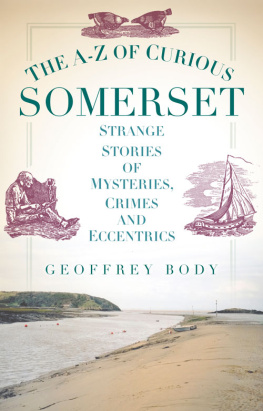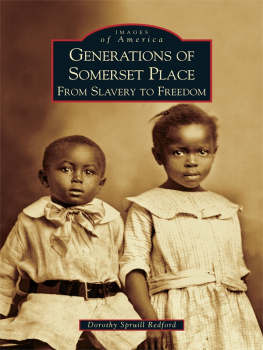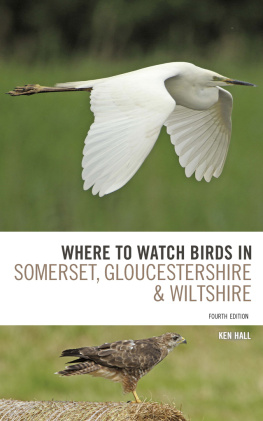J.H. WADE, M.A.
With Thirty-two Illustrations and Two Maps
"Upon smooth Quantock's airy ridge we roved."
London Methuen & Co
36 Essex St. Strand
The Pinnacles, Cheddar
The Pinnacles, Cheddar
PREFACE
The general scheme of this Guide is determined by that of the series of which it forms part. But a number of volumes by different writers are never likely to be quite uniform in character, even though planned on the same lines; and it seems desirable to explain shortly the aim we have had in view in writing our own little book. In our accounts of places of interest we have subordinated the historical to the descriptive element; and whilst we have related pretty fully in the Introduction the events of national importance which have taken place within the county, we have not devoted much space to family histories. We have made it our chief purpose to help our readers to see for themselves what is best worth seeing. If, in carrying out our design, we appear to have treated inadequately many interesting country seats, our excuse must be that such are naturally not very accessible to the ordinary tourist, whose needs we have sought to supply. And if churches and church architecture seem to receive undue attention, it may be pleaded that Somerset is particularly rich in ecclesiastical buildings, and affords excellent opportunities for the pursuit of a fascinating study.
In the production of our book we have used freely such sources of information as circumstances have enabled us to consult; and in this connection we wish to make specific acknowledgment of our indebtedness to C.R.B. Barrett's "Somersetshire," the Rev. W.H.P. Greswell's "Land of Quantock," and the "Proceedings of the Somerset Archaeological and Natural History Society." We have likewise profited by the kindness of several friends and correspondents, amongst whom we desire to mention the late R.P. Brereton, Dr F.H. Allen, Mr F.R. Heath, the Rev. C.W. Whistler, the Rev. E.H. Bates, and the Rev. J.S. Hill, B.D. (the last especially in regard to the origin of certain place-names). But our descriptions are, for the most part, based upon notes taken on the spot. Almost all the localities that are included in the alphabetical list have been visited by one or other of us: those of any interest, which from various causes we have failed to reach, can (we believe) be counted upon the fingers. We cannot expect our work to be wholly free from errors and omissions, but we have done our best to make it accurate and to render it as complete as the size of the volume allows.
G. W. W.
J. H. W.
CONTENTS
SOMERSET
LIST OF ILLUSTRATIONS
(From a Photograph by Messrs Valentine, Dundee)
(From a Photograph by Messrs Valentine, Dundee)
(From a Photograph by Mr Walter Raymond)
(From a Photograph by Messrs Frith, Reigate)
(From a Photograph by Messrs Frith, Reigate)
(From a Photograph by Messrs Frith, Reigate)
(From a Photograph by Messrs Frith, Reigate)
(From a Photograph by Messrs Frith, Reigate)
(From a Photograph by Messrs Valentine, Dundee)
(From a Photograph by Messrs Frith, Reigate)
(From a Photograph by Messrs Frith, Reigate)
(From a Photograph by Messrs Valentine, Dundee)
(From a Photograph by Messrs Valentine, Dundee)
(From a Photograph by Messrs Valentine, Dundee)
(From a Photograph by Messrs Frith, Reigate)
(From a Photograph by Mr Walter Raymond)
(From a Photograph by Messrs Frith, Reigate)
(From a Photograph by Messrs Valentine, Dundee)
(From a Photograph by Messrs Frith, Reigate)
(From a Photograph by Messrs Frith, Reigate)
(From a Photograph by Messrs Valentine, Dundee)
(From a Photograph by Messrs Valentine, Dundee)
(From a Photograph by Messrs Valentine, Dundee)
MAP OF SOMERSET
INTRODUCTION
I.
SITUATION AND EXTENT
SOMERSET is one of the S.W. counties of England. On the N. it is washed by the Bristol Channel; on the N.E. the Avon, like a silver streak, divides it from Gloucestershire; it is bordered on the E. by Wiltshire; its S.E. neighbour is Dorset; and on the S.W. it touches Devon. Its shape is so irregular that dimensions give a misleading indication of its extent. Its extreme length is about 60 m., and its greatest width 38; but it narrows so rapidly westwards that where it abuts on Devon its average width is only 15 m. In point of size it stands seventh on the list of English counties, having an area of over a million acres, or 1633 square m. It lies between 2 10' and 3 50' W. longitude, and 50 50' and 51 30' N. latitude. Its population in 1901 was 508,104. It is one of the few counties which was originally the settlement of a single tribe, the Somersaetas, from whom it takes its name; and the fact that "Somerset" (like Dorset) is thus a tribal name is in favour of its dispensing with the suffix shire, though "Somersetshire" has been in common use since the time of the "Saxon Chronicle."
II.
CLIMATE
The climate is mild and equable, though from its diversified surface the county experiences some varieties of temperature. The seaboard is warm, but its considerable southward trend gives it a good Atlantic frontage, which prevents it from being relaxing. Weston is said to be ten degrees warmer than London. The breezes on the uplands are bracing but never searching. The Mendips have been considered a suitable site for a consumptive sanatorium. The central flats are damp. They lie so low that in places the coast has to be protected by sea walls, and the prevalence of large "rhines" or drains makes for humidity. The sheltered vale of Taunton Dean (for the term cp. Hawthorndean, Rottingdean) is warm and sunny. The rainfall is abundant, but, except in the neighbourhood of Exmoor, cannot be said to be excessive.
III.
COMMUNICATIONS
Roads.Everywhere highways and byways are numerous, and some districts are prodigally supplied with footpaths. With the exception of Exmoor, which is best explored on foot, even the remotest parts are accessible to the wheelman. But the cyclist will find the travelling somewhat unequal. Like the curate's fabled egg, the roads are best described as "good in parts." Amongst the hills they are firm but arduous, in the plains easy but soft. The main thoroughfares, however, can be recommended both for breadth and surface.
Railways.The Somerset railway system is extensive. The G.W.R. (the chief service of the county) unites Bath with Bristol, and throwing itself round the N.W. extremity of the Mendips, runs down an almost ideal track to Taunton and Wellington. A loop from Worle to Uphill serves Weston-super-Mare, whilst short branches, one from Bristol and a econd from Yatton, afford communication with Portishead and Clevedon. Another section skirts the E. side of the county from Frome to Yeovil, and by taking a short cross-country cut from Castle Cary to Langport unites again with the trunk line near Taunton. From Taunton branches radiate to Minehead, Dulverton, Chard, and Yeovil. A branch line again connects Bristol with Frome, and access is obtained to Wells and Cheddar by a line from Yatton, skirting the W. base of the Mendips as far as Witham. The S. & D. constitutes a link between the Midland on the N. and the L. & S.W. on the S. It boldly attacks the Mendips from Bath, and after clambering over the summit at Masbury, drops down suddenly to Evercreech, from which point it diverges either westwards to Burnham (with branches to Wells and Bridgewater), or southwards to Templecombe. A light railway serves the Wrington Vale, and another connects Weston with Clevedon.











